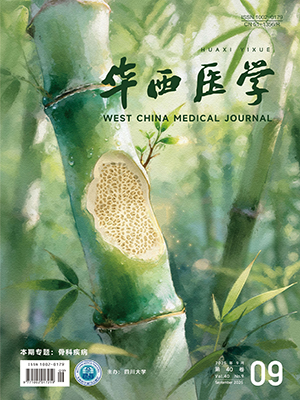| 1. |
Zhang J, Wu H, Wang R. Metabolic syndrome and esophageal cancer risk: a systematic review and meta-analysis. Diabetol Metab Syndr, 2021, 13(1): 8.
|
| 2. |
Khorraminezhad L, Rudkowska I. Effect of yogurt consumption on metabolic syndrome risk factors: a narrative review. Curr Nutr Rep, 2021, 10(1): 83-92.
|
| 3. |
Huang WC, Lin CL, Hsu YJ, et al. Inulin and fibersol-2 combined have hypolipidemic effects on high cholesterol diet-induced hyperlipidemia in hamsters. Molecules, 2016, 21(3): 313.
|
| 4. |
Ferrario C, Statello R, Carnevali L, et al. How to feed the mammalian gut microbiota: bacterial and metabolic modulation by dietary fibers. Front Microbiol, 2017, 8: 1749.
|
| 5. |
Castleberry T, Irvine C, Gordon R, et al. The dose effect of whey protein on glycemic control in adults with insulin resistance. Int J Food Sci Biotechnol, 2020, 5(4): 62-67.
|
| 6. |
Kawase M, He F, Kubota A, et al. Inhibitory effect of Lactobacillus gasseri TMC0356 and Lactobacillus GG on enhanced vascular permeability of nasal mucosa in experimental allergic rhinitis of rats. Biosci Biotechnol Biochem, 2006, 70(12): 3025-3030.
|
| 7. |
Kawase M, He F, Kubota A, et al. Effect of fermented milk prepared with two probiotic strains on Japanese cedar pollinosis in a double-blind placebo-controlled clinical study. Int J Food Microbiol, 2009, 128(3): 429-434.
|
| 8. |
Kubota A, He F, Kawase M, et al. Lactobacillus strains stabilize intestinal microbiota in Japanese cedar pollinosis patients. Microbiol Immunol, 2009, 53(4): 198-205.
|
| 9. |
Kawase M, He F, Kubota A, et al. Heat-killed Lactobacillus gasseri TMC0356 protects mice against influenza virus infection by stimulating gut and respiratory immune responses. FEMS Immunol Med Microbiol, 2012, 64(2): 280-288.
|
| 10. |
Kawase M, He F, Miyazawa K, et al. Orally administered heat-killed Lactobacillus gasseri TMC0356 can upregulate cell-mediated immunity in senescence-accelerated mice. FEMS Microbiol Lett, 2012, 326(2): 125-130.
|
| 11. |
Shi L, Li M, Miyazawa K, et al. Effects of heat-inactivated Lactobacillus gasseri TMC0356 on metabolic characteristics and immunity of rats with the metabolic syndrome. Br J Nutr, 2013, 109(2): 263-272.
|
| 12. |
Canfora EE, Meex RCR, Venema K, et al. Gut microbial metabolites in obesity, NAFLD and T2DM. Nat Rev Endocrinol, 2019, 15(5): 261-273.
|
| 13. |
Pozzi S, Boergesen M, Sinha S, et al. Peroxisome proliferator-activated receptor-alpha is a functional target of p63 in adult human keratinocytes. J Invest Dermatol, 2009, 129(10): 2376-2385.
|
| 14. |
Wang Y, Viscarra J, Kim SJ, et al. Transcriptional regulation of hepatic lipogenesis. Nat Rev Mol Cell Biol, 2015, 16(11): 678-689.
|
| 15. |
Schweizer E, Hofmann J. Microbial typeⅠfatty acid synthases (fas): major players in a network of cellular fas systems. Microbiol Mol Biol Rev, 2004, 68(3): 501-517.
|
| 16. |
Jin YJ, Li SZ, Zhao ZS, et al. Carnitine palmitoyltransferase-1 (CPT-1) activity stimulation by cerulenin via sympathetic nervous system activation overrides cerulenin’s peripheral effect. Endocrinology, 2004, 145(7): 3197-3204.
|
| 17. |
Kwon H, Kim D, Kim JS. Body fat distribution and the risk of incident metabolic syndrome: a longitudinal cohort study. Sci Rep, 2017, 7(1): 10955.
|
| 18. |
Bernini LJ, Simão AN, Alfieri DF, et al. Beneficial effects of Bifidobacterium lactis on lipid profile and cytokines in patients with metabolic syndrome: a randomized trial. Effects of probiotics on metabolic syndrome. Nutrition, 2016, 32(6): 716-719.
|
| 19. |
Grygiel-Górniak B. Peroxisome proliferator-activated receptors and their ligands: nutritional and clinical implications-a review. Nutr J, 2014, 13: 17.
|
| 20. |
Bougarne N, Weyers B, Desmet SJ, et al. Molecular actions of PPAR-α in lipid metabolism and inflammation. Endocr Rev, 2018, 39(5): 760-802.
|
| 21. |
Mohd MA, Ahmad Norudin NA, Muhammad TST. Transcriptional regulation of retinol binding protein 4 by Interleukin-6 via peroxisome proliferator-activated receptor α and CCAAT/Enhancer binding proteins. Mol Cell Endocrinol, 2020, 505: 110702.
|
| 22. |
Cheng C, Geng F, Cheng X, et al. Lipid metabolism reprogramming and its potential targets in cancer. Cancer Commun (Lond), 2018, 38(1): 27.
|
| 23. |
Shimomura I, Bashmakov Y, Ikemoto S, et al. Insulin selectively increases SREBP-1c mRNA in the livers of rats with streptozotocin-induced diabetes. Proc Natl Acad Sci USA, 1999, 96(24): 13656-13661.
|
| 24. |
Cagen LM, Deng X, Wilcox HG, et al. Insulin activates the rat sterol-regulatory-element-binding protein 1c (SREBP-1c) promoter through the combinatorial actions of SREBP-, LXR, Sp-1 and NF-Y cis-acting elements. Biochem J, 2005, 385(Pt 1): 207-216.
|
| 25. |
Ruiz R, Jideonwo V, Ahn M, et al. Sterol regulatory element-binding protein-1 (SREBP-1) is required to regulate glycogen synthesis and gluconeogenic gene expression in mouse liver. J Biol Chem, 2014, 289(9): 5510-5517.
|
| 26. |
Loftus TM, Jaworsky DE, Frehywot GL, et al. Reduced food intake and body weight in mice treated with fatty acid synthase inhibitors. Science, 2000, 288(5475): 2379-2381.
|
| 27. |
Park DY, Ahn YT, Huh CS, et al. Dual probiotic strains suppress high fructose-induced metabolic syndrome. World J Gastroenterol, 2013, 19(2): 274-283.
|
| 28. |
Oh YJ, Kim HJ, Kim TS, et al. Effects of Lactobacillus plantarum PMO 08 alone and combined with chia seeds on metabolic syndrome and parameters related to gut health in high-fat diet-induced obese mice. J Med Food, 2019, 22(12): 1199-1207.
|




